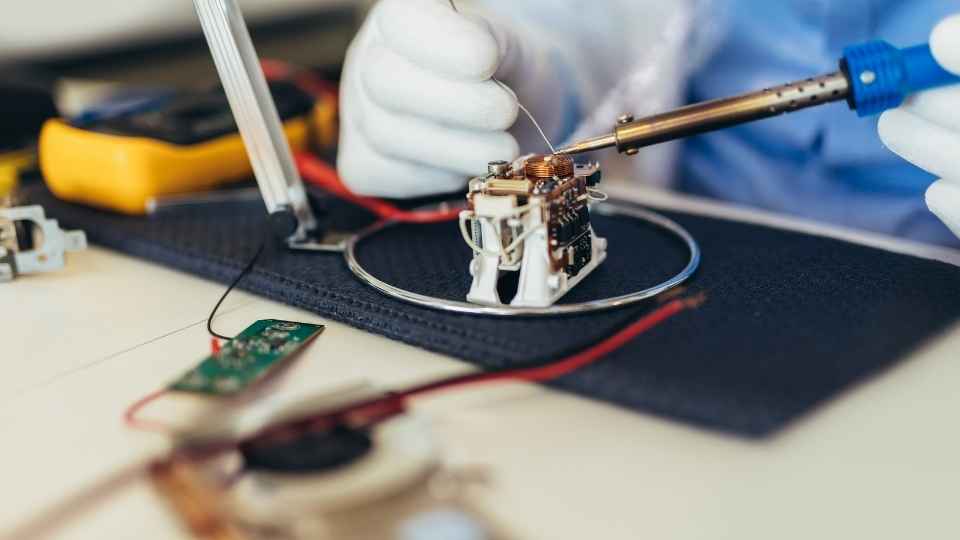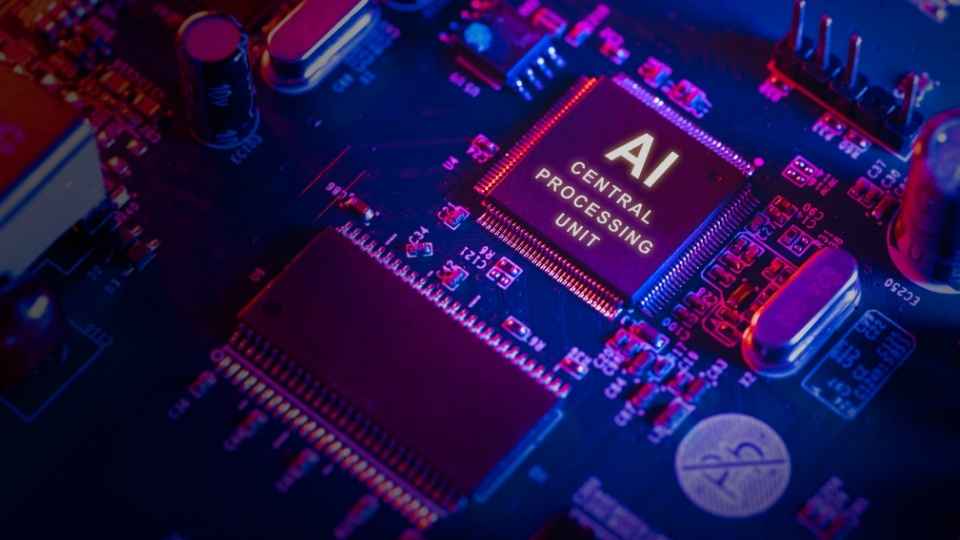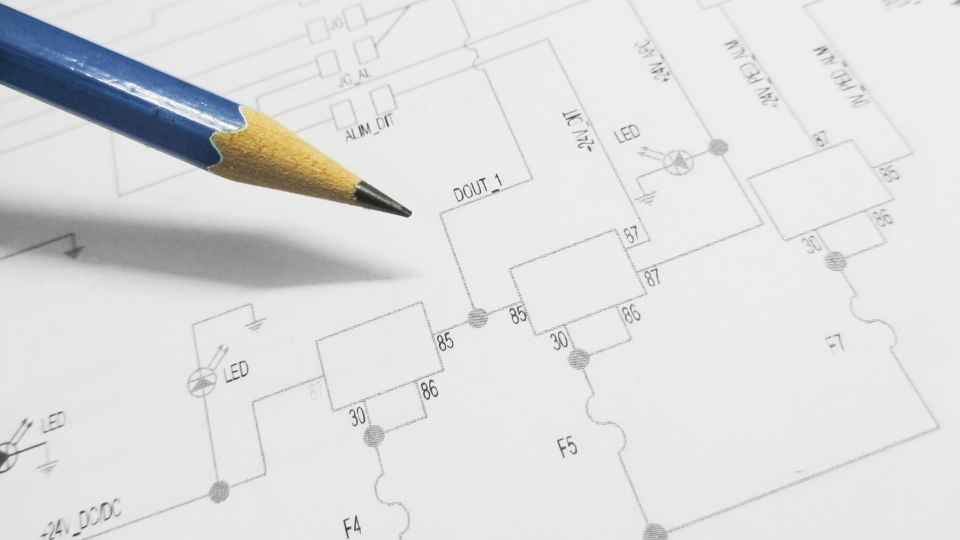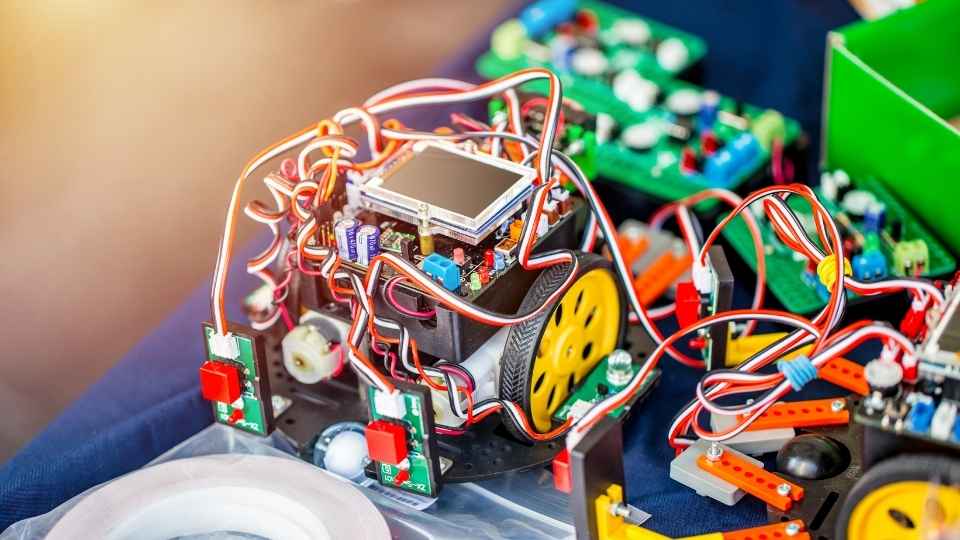
Are you a tech enthusiast craving the thrill of creating your own electronic devices? Look no further!
In this article, we will explore a plethora of top-notch electronics project ideas that range from DIY gadgets to innovative household integrations.
Whether you're an aspiring inventor or simply enjoy tinkering with circuits, these projects are sure to ignite your creativity and elevate your electronics skills.
Get ready to embark on a journey of technical precision and hands-on exploration as we dive into the world of cutting-edge electronics projects.
Key Takeaways
- DIY gadgets and projects offer endless possibilities for innovation and personalization.
- Fun projects with easy circuits allow for enjoyable and educational experiences.
- Building household electronics from scratch enhances understanding of circuitry and technology integration.
- Innovative integrations for every room in your home can enhance daily life and convenience.
Creative DIY Gadgets for Electronics Enthusiasts
In this section, we will explore a range of innovative and imaginative DIY gadgets that are sure to captivate electronics enthusiasts. These gadgets showcase the creativity and technical prowess of hobbyists who desire freedom in their electronic projects.
One such gadget is a DIY Bluetooth speaker, where individuals can build their own portable audio system using readily available components like speakers, amplifiers, and Bluetooth modules.
Another exciting project is the DIY smart home automation system, allowing users to control various household devices remotely using smartphone apps or voice commands.

Additionally, electronics enthusiasts can indulge in building their own drone kits, enabling them to customize drones with features like GPS navigation and high-definition cameras.
These creative DIY gadgets provide endless possibilities for innovation and personalization while satisfying the thirst for technological freedom.
Easy Circuits: Fun Projects for DIY Electronics
This section explores a variety of enjoyable projects centered around simple circuits for those interested in delving into the world of DIY electronics. Creating your own electronic gadgets can be a rewarding and satisfying experience, allowing you to unleash your creativity and explore the possibilities of technology. Here are some exciting project ideas to get you started:
- LED Cube: Build a mesmerizing 3D display using an array of LEDs.
- Light Theremin: Create a musical instrument that responds to light by generating different tones.
- Arduino Weather Station: Develop a weather monitoring system using sensors such as temperature, humidity, and pressure.
- Motion-Sensing Alarm: Construct an alarm system that detects motion and alerts you if someone enters your space.
Building Your Own Household Electronics From Scratch
By constructing electronic devices from scratch, individuals can enhance their understanding of circuitry and expand their knowledge of technology integration within the home. Building household electronics from scratch allows for a deeper level of customization and control over the functionality and design of these devices. It empowers individuals to create unique solutions tailored to their specific needs and preferences.
When building household electronics, one must start with a clear understanding of the fundamental principles of circuitry. This includes knowledge about components such as resistors, capacitors, transistors, and integrated circuits. It also requires familiarity with circuit diagrams and soldering techniques.
Through this hands-on approach, individuals can gain practical skills that can be applied not only in building household electronics but also in troubleshooting and repairing existing devices. This self-sufficiency promotes freedom by reducing reliance on commercial products and empowering individuals to take charge of their own technological needs.
Innovative Integrations: Electronics for Every Room in Your Home
Developing a comprehensive understanding of circuitry principles and exploring innovative applications enables individuals to incorporate electronics seamlessly into every room of their home. By leveraging these skills, homeowners can create a truly smart and interconnected living environment.

Here are some exciting ideas to inspire your DIY projects:
- Install motion sensor lights in your hallway for energy efficiency and convenience.
- Design a home security system using cameras, sensors, and alarms to ensure the safety of your loved ones.
- Create a voice-controlled smart home hub that can control various devices with simple voice commands.
- Build a personalized entertainment center that integrates audio systems, gaming consoles, and streaming devices.
These ideas demonstrate how electronics can enhance different aspects of daily life, providing freedom and convenience at every turn.
Now let's take a closer look at some hands-on projects to further elevate your electronics skills.
Hands-On Projects: Get Your Electronics Skills to the Next Level
To further elevate your skills in electronics, let's explore some hands-on projects that will help you take your knowledge to the next level.
These projects are designed to provide you with practical experience and enhance your understanding of electronic systems.
One project idea is building a digital thermometer using an Arduino microcontroller. This project will allow you to learn about temperature sensors, analog-to-digital conversion, and programming.
Another project worth considering is creating a home automation system using Raspberry Pi. By integrating various sensors and actuators, you can control lights, appliances, and security systems from your smartphone or computer.

Additionally, constructing a robot arm using servo motors and Arduino can teach you about mechanical design principles and motion control algorithms.
Engaging in these hands-on projects will not only expand your electronics expertise but also empower you to pursue new avenues of innovation in the field.
Frequently Asked Questions
What Is the Cost Range for the Materials Required to Build These DIY Gadgets?
The cost range for the materials required to build these DIY gadgets can vary depending on the complexity and specific components needed. It is recommended to research and compare prices from various suppliers to ensure cost-effectiveness.
Are There Any Safety Precautions or Guidelines That Need to Be Followed While Working on These Electronics Projects?
Safety precautions and guidelines are crucial when working on electronics projects. These include wearing protective gear, ensuring proper grounding, following manufacturer instructions, and being mindful of electrical hazards to prevent accidents or damage to equipment.
Can These DIY Gadgets Be Customized or Modified According to Personal Preferences?
Yes, DIY gadgets can be customized or modified according to personal preferences. This flexibility allows individuals to tailor the functionality and design of the electronics projects to better suit their needs and preferences.
Are There Any Online Resources or Tutorials Available for Beginners to Learn More About DIY Electronics Projects?
There are numerous online resources and tutorials available for beginners to learn about DIY electronics projects. These resources provide comprehensive information and guidance, enabling individuals to acquire knowledge and skills in this field.
To successfully complete electronics projects, specific tools and equipment are necessary. These include a soldering iron, multimeter, wire cutters, breadboard, and various components such as resistors and capacitors. Proper use of these tools ensures accurate assembly and functionality of the projects.

 Basic Electronics ConceptsEssential ToolsCircuit Design BasicsMicrocontrollersDIY Electronics ProjectsRoboticsPrivacy PolicyTerms And Conditions
Basic Electronics ConceptsEssential ToolsCircuit Design BasicsMicrocontrollersDIY Electronics ProjectsRoboticsPrivacy PolicyTerms And Conditions
